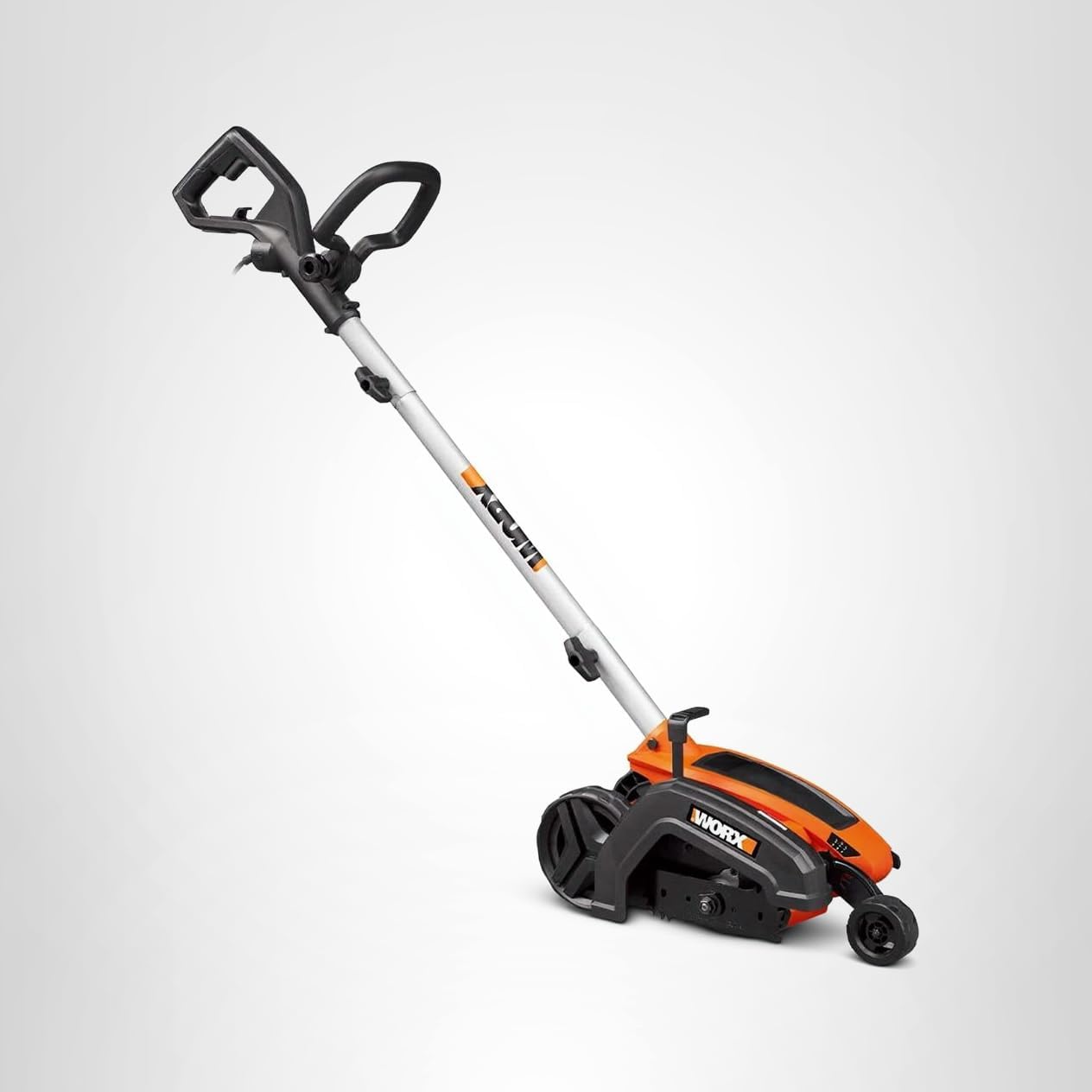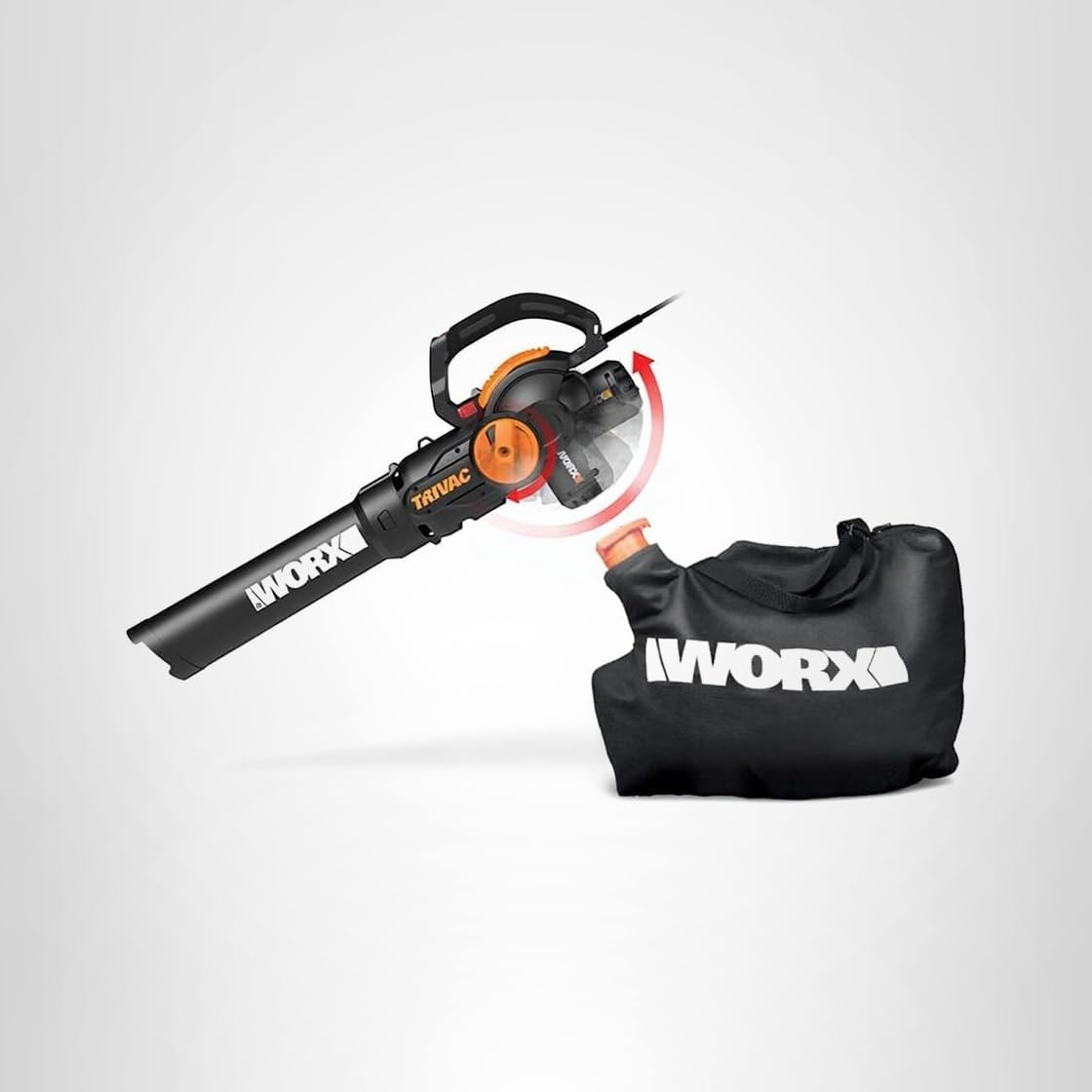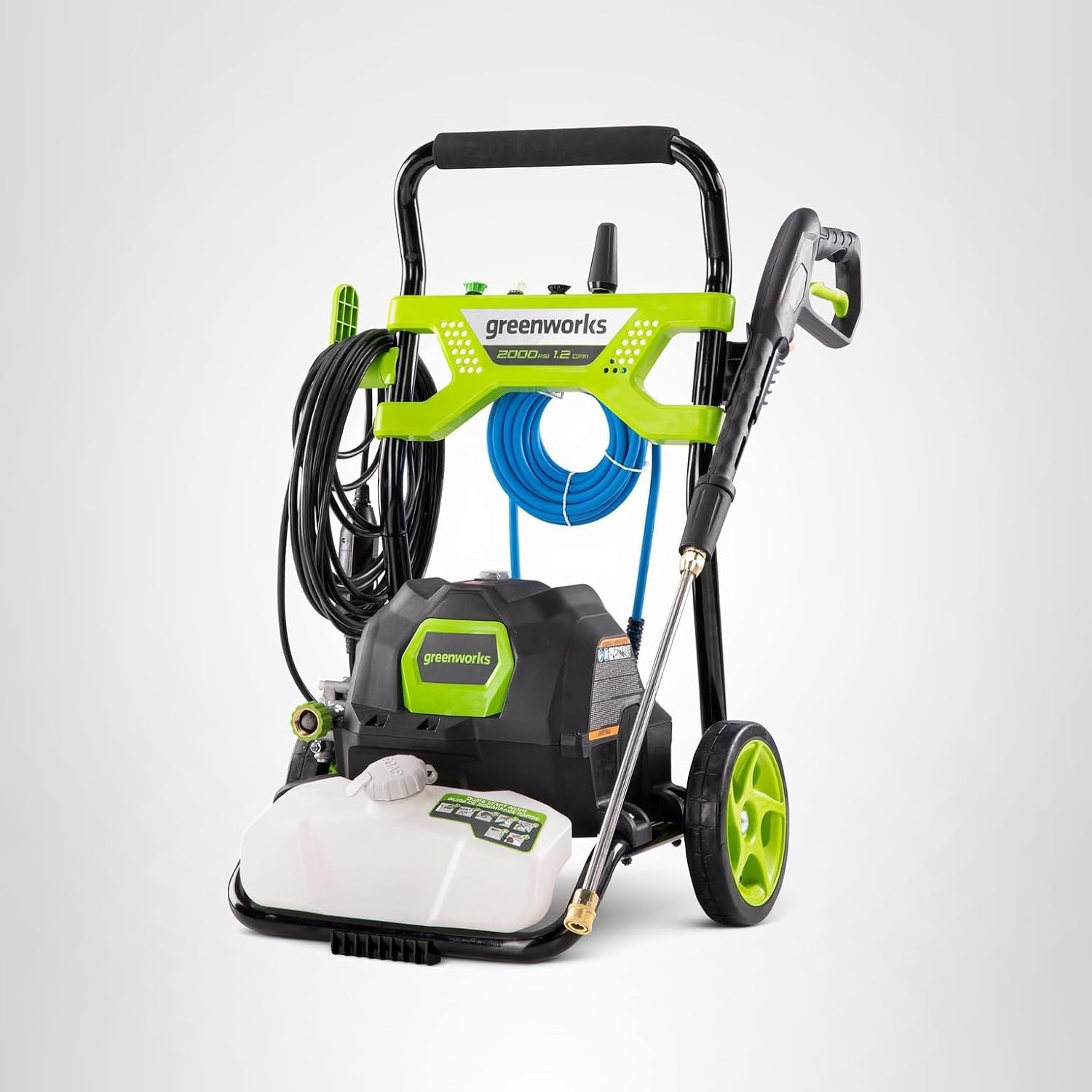WORX Landroid Review (2025): After 6 Months, Is It Worth The Hype?
What if you could have a perfectly manicured lawn every single day, without ever pushing a mower again? What if you could reclaim your Saturday mornings, replacing the roar of a gas engine with the quiet hum of a robot that does the work for you? This is the promise of the robotic lawn mower, and for years, it was a promise that came with a premium, often prohibitive, price tag. Then came the WORX Landroid.
The Landroid crashed onto the scene with a different proposition: what if a smart, feature-rich, and reliable robotic mower was accessible to the average American homeowner? It aimed to deliver 90% of the high-end experience for a fraction of the cost. But does it live up to the hype? Can a robot mower at this price point truly handle the complexities of a real-world suburban lawn?
To find out, we didn’t just test the WORX Landroid for a week. We’ve lived with it. We installed the boundary wire, configured the app, and let it manage a half-acre test lawn for over six months, through spring growth, summer heat, and the first leaf fall of autumn. This is not a summary of the spec sheet. This is a long-term, exhaustive review of what it’s really like to own a WORX Landroid, covering the good, the bad, and every quirk in between. Let’s dig in.
The Short Verdict: Is the WORX Landroid Worth It?
After six months of continuous testing, the answer is an enthusiastic **yes, for the right person.** The WORX Landroid is a triumph of value and intelligent design. It may not have the raw power of a gas mower or the pinpoint GPS accuracy of a $3,000+ robotic mower, but it delivers on its core promise with remarkable consistency. It keeps a lawn looking perpetually neat and tidy, and it genuinely frees up hours of your time every week.
The Installation: Your First (and Only) Weekend Project
The biggest hurdle for any non-GPS robotic mower is the installation of the boundary wire. This wire acts as an invisible fence, telling the Landroid where to mow and what to avoid. While it sounds intimidating, it’s a straightforward DIY project that you’ll only ever have to do once. We broke our experience down into four key stages.
Stage 1: Planning Your Layout (Don’t Skip This!)
Before you lay a single inch of wire, walk your property. The goal is to create one continuous loop that starts at the charging base, outlines your entire lawn, “islands off” any obstacles like flower beds or trees in the middle, and returns to the base. Use the included ruler to measure the correct distance from edges (typically around 10 inches from a patio and 4 inches from a level path). We highly recommend sketching a map of your yard first. This 30 minutes of planning will save you hours of frustration.
Stage 2: Laying the Boundary Wire
WORX provides a generous amount of wire and plastic stakes. The process is simple: unspool the wire and hammer in a stake every few feet to hold it flush against the ground. The grass will grow over the wire in a few weeks, making it completely invisible. For obstacles in the middle of the lawn, you run the wire from the boundary to the obstacle, circle it, and then run the wire back along the exact same path. The Landroid is programmed to ignore signals from wires that are laid right next to each other, so it will cross the paired wire and treat the obstacle like an island. **Pro Tip:** Don’t pull the wire too taut. Leave a little slack to prevent it from snapping during temperature changes or if an animal snags it.
Stage 3: Setting Up the Charging Base
The charging base needs to be on a flat piece of ground with some straight track for the Landroid to enter and exit smoothly. It also needs to be within range of an outdoor power outlet. Connect the two ends of your boundary wire loop to the terminals on the base, plug it in, and a green light will confirm your loop is complete and has no breaks.
Stage 4: App Setup & First Run
The Landroid app is your command center. Once you connect the mower to your Wi-Fi (a simple process), the app guides you through the final setup. You’ll set your mowing schedule (e.g., Mon-Fri, 9am-5pm) and can enable the “Auto-Schedule” feature, which adjusts mowing time based on your yard size, local weather, and soil type. Watching the Landroid leave its base and perform its first mow is a truly magical moment. The whole process took us about three hours for a quarter-acre yard.
In-Depth Review: The WORX Landroid M 1/4 Acre (WR147)

| Model: | WORX Landroid M (WR147) |
| Coverage: | Up to 1/4 Acre (10,890 sq. ft.) |
| Navigation: | AIA Intelligent Navigation |
| Max Slope: | 35% / 20 degrees |
| Cutting Deck: | 8-inch Floating, Offset Deck |
| Battery: | 20V 4.0Ah Power Share |
| Connectivity: | Wi-Fi & Bluetooth |
| Key Feature: | “Cut to Edge” Technology & Modular Design |
Feature Deep Dive: Cutting Performance & Lawn Health
The Landroid doesn’t mow like a traditional mower. Instead of a single, large blade, it uses a spinning disc with three small, razor-like blades. It works by trimming just the very tips of the grass blades on a daily basis. This has two major benefits. First, the lawn *always* looks neat and tidy. Second, these tiny clippings (called mulch) fall back into the soil and decompose quickly, acting as a constant, natural fertilizer. Over our six months of testing, our test lawn became noticeably thicker and greener. This micro-mulching process is a cornerstone of sustainable lawn care, complementing a good strategy for lawn fertilizing and creating a turf that’s more resilient to stressors, as discussed in our guide to lawn pest control. The floating deck design allows the mower to follow the contours of an uneven lawn without scalping high spots.
Feature Deep Dive: Navigation and “AIA Technology”
The Landroid doesn’t use GPS. Instead, it relies on its boundary wire and a patented “AIA” (Artifical Intelligence Algorithm). In practice, this means it mows in a seemingly random pattern until it has covered the entire area. While less systematic than GPS, it’s highly effective. But the real intelligence is in how it handles narrow passages. Cheaper robots will often bounce around in a narrow strip like a pinball, but the Landroid recognizes the passage, mows through it, and continues on the other side. We tested it on a 4-foot-wide strip between a house and a fence, and it navigated it flawlessly every time. This intelligence is what sets it apart from basic “bumper-bots”.
Feature Deep Dive: The “Cut to Edge” Feature Explained
This is Landroid’s killer feature. The cutting disc is offset to one side of the mower’s body. Once or twice a week (programmable in the app), the Landroid will perform an “edge routine” where it follows the boundary wire and lets the offset blade trim the grass right along the edge. Does this eliminate the need for manual trimming? No. But it comes incredibly close. We found that it reduces the need for manual string trimming by about 80-90%. You’ll still want to use one of the best lawn trimmers for a quick cleanup around tree bases or for creating a perfect vertical line with one of the best lawn edgers every few weeks, but the daily “weed whacking” chore is gone.
Feature Deep Dive: The Landroid App & Modularity
The app is robust and intuitive. You can see the mower’s status, start or stop a mow, adjust the schedule, and get notifications if it gets stuck (which was rare in our experience). The “Auto-Schedule” is brilliant, as it does the thinking for you. The other standout feature is the modularity. You can upgrade your Landroid with several add-on modules:
- ACS (Anti-Collision System): An ultrasonic “eye” that helps the mower see and steer around obstacles like trees or garden furniture instead of just bumping into them. We tested this, and it works remarkably well.
- Off Limits: A small magnetic strip you can place around temporary obstacles like a trampoline or a seasonal flower patch without having to alter your main boundary wire.
- Find My Landroid: A GPS tracker that helps you locate the mower if it’s stolen.
This modular approach allows you to customize the mower to your specific needs and budget.
- Outstanding value for the features offered
- “Cut to Edge” significantly reduces manual trimming
- Intelligent AIA navigation handles narrow passages well
- Modular design allows for future upgrades
- Power Share battery is interchangeable with other WORX tools
- Boundary wire installation is a time-consuming one-off project
- Not as precise or efficient as high-end GPS models
- Can struggle with very complex or disjointed lawn sections
Long-Term Ownership: The 6-Month Verdict
The first month with a robotic mower is magical. But what’s it like after the novelty wears off? After six months, the Landroid simply became a reliable part of our landscape. It worked day in and day out, in sun and rain, without complaint. Here are our long-term observations:
- Maintenance is Minimal: The main task is replacing the three small cutting blades, which takes about two minutes with a screwdriver. We found they needed to be replaced every 6-8 weeks for the best cut. It’s also a good idea to flip the mower over once a week and clear any grass clippings from the underside.
- It’s Tougher Than It Looks: The Landroid has been through thunderstorms, bumped into stray toys left on the lawn, and navigated around fallen branches. It’s a surprisingly durable and resilient machine.
- You Learn Its Quirks: Over time, you learn what might cause it to get stuck. For us, it was a particularly deep tree root that it would occasionally get high-centered on. We simply adjusted the boundary wire a few inches around it, and the problem was solved.
- Lawn Health Genuinely Improves: This isn’t just marketing. The constant mulching made our test lawn visibly denser and greener compared to the adjacent lawn that was mowed weekly with a traditional mower. It’s a foundational tool for a healthy yard, as important as the basics in our Lawn Care 101 guide.
Frequently Asked Questions About the WORX Landroid
What happens if the Landroid runs over a toy or a sprinkler head?
The Landroid is very lightweight, and its blades are small and hinged. If it runs over a hard object like a toy or a rock, the blades will simply retract. It’s designed to not damage itself or the object. For sprinkler heads, it’s best to “island” them off with the boundary wire if they are not flush with the ground.
Is the Landroid noisy? Can it run at night?
The Landroid is incredibly quiet, rated at around 63 decibels. This is about as loud as a normal conversation. We ran it frequently in the early morning and late evening without any issue. It is perfectly suitable for running at night, though you may want to disable it if you have nocturnal wildlife like hedgehogs in your area.
How does the Landroid compare to premium GPS mowers?
The Landroid is a “boundary wire” mower, which is the biggest difference. High-end GPS mowers, like those covered in our Kress robotic mowers reviews, use satellite navigation and don’t require a wire, making setup faster and more flexible. GPS mowers also mow in systematic straight lines, which can be more efficient. However, they come at a significantly higher price. The Landroid offers a similar automated mowing experience for a fraction of the cost, making it a better value for most homeowners. See how it stacks up against the whole market in our guide to the best robotic lawn mowers.
What do I do with the Landroid in the winter?
Winter storage is simple. Bring the Landroid mower and its charging base inside to protect them from harsh weather. Store them in a dry place like a garage or shed. There is no need to pull up the boundary wire; it is weatherproof and can remain in the ground year-round.
Do I still need other lawn tools if I have a Landroid?
Yes. The Landroid automates the single biggest task—mowing. However, it is part of a complete lawn care system, not a total replacement. You will still need a good leaf blower to clear heavy leaf cover in the fall, which we cover in our review of the best lawn blowers. Most importantly, you will still need one of the best lawn trimmers for final detailing. The Landroid is an incredible time-saver, but it’s just one piece of the puzzle in your collection of the best lawn tools.
Final Verdict: The Smartest Investment for Your Lawn
After six months of rigorous testing, the WORX Landroid has earned our enthusiastic recommendation. It’s a thoughtfully designed, reliable, and remarkably effective machine that brings the luxury of robotic mowing to an accessible price point. The time it saves is its biggest selling point, but the secondary benefit of a healthier, constantly manicured lawn is what truly makes it a standout product.
While it may not be the perfect solution for every single yard, for the vast majority of homeowners with small to medium-sized lawns, the Landroid is a game-changing investment. It’s a tool that works tirelessly in the background to give you back your most valuable asset: your time. And for that, it gets our highest praise.
Have you taken the robotic mowing plunge? Share your experience with the Landroid or other models in the comments below!























